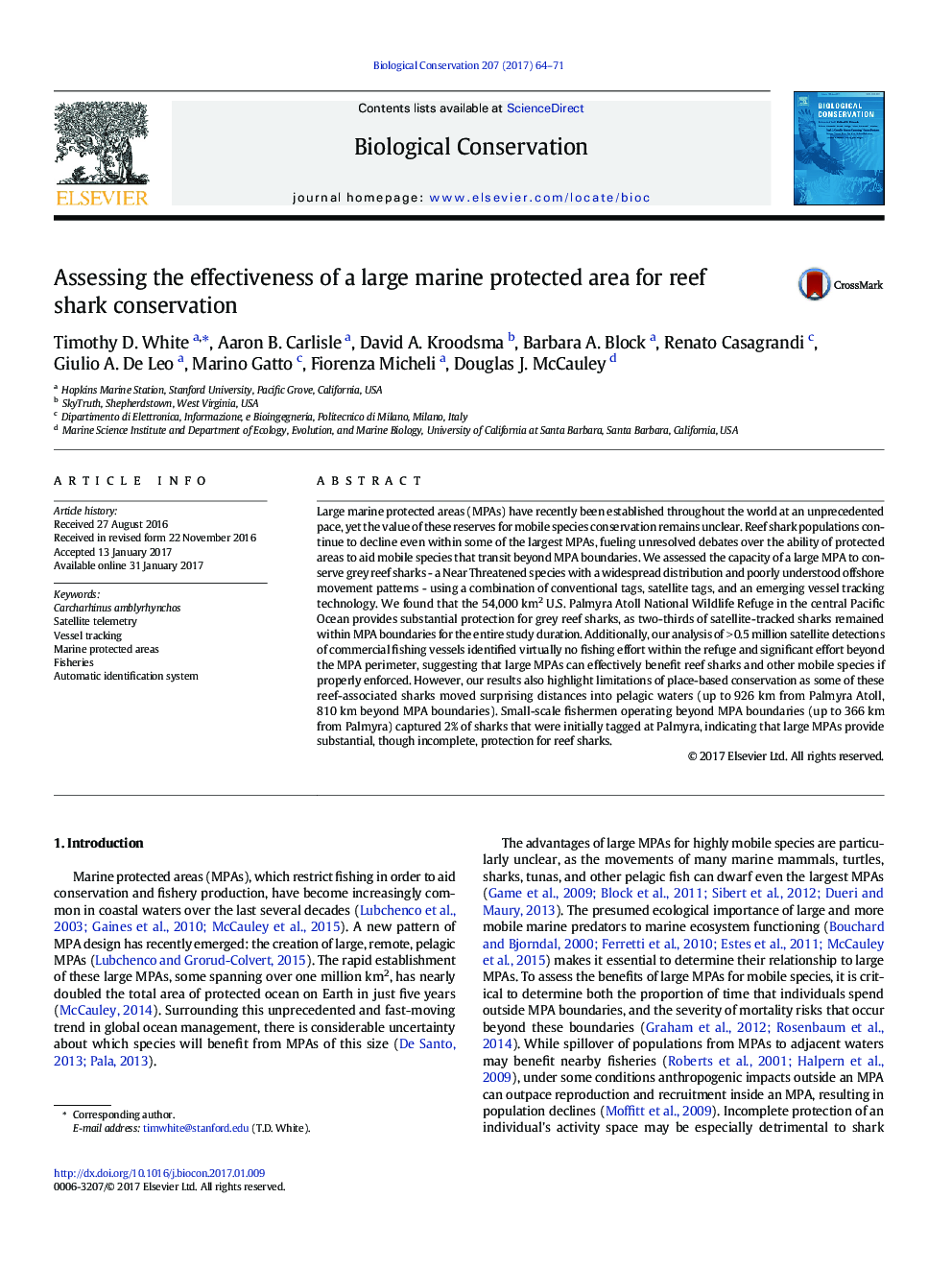| کد مقاله | کد نشریه | سال انتشار | مقاله انگلیسی | نسخه تمام متن |
|---|---|---|---|---|
| 5743433 | 1617895 | 2017 | 8 صفحه PDF | دانلود رایگان |
- We used two tag types and vessel tracking to assess a large marine protected area.
- Large MPAs offer substantial, though not absolute, protection for reef sharks.
- Most grey reef sharks stayed within the MPA near minimal observed fishing effort.
- Two swam past the largest possible MPA limits (up to 926Â km into open water).
- 2% of sharks tagged in the MPA were caught on atolls 223-366Â km away from the MPA.
Large marine protected areas (MPAs) have recently been established throughout the world at an unprecedented pace, yet the value of these reserves for mobile species conservation remains unclear. Reef shark populations continue to decline even within some of the largest MPAs, fueling unresolved debates over the ability of protected areas to aid mobile species that transit beyond MPA boundaries. We assessed the capacity of a large MPA to conserve grey reef sharks - a Near Threatened species with a widespread distribution and poorly understood offshore movement patterns - using a combination of conventional tags, satellite tags, and an emerging vessel tracking technology. We found that the 54,000Â km2 U.S. Palmyra Atoll National Wildlife Refuge in the central Pacific Ocean provides substantial protection for grey reef sharks, as two-thirds of satellite-tracked sharks remained within MPA boundaries for the entire study duration. Additionally, our analysis of >Â 0.5 million satellite detections of commercial fishing vessels identified virtually no fishing effort within the refuge and significant effort beyond the MPA perimeter, suggesting that large MPAs can effectively benefit reef sharks and other mobile species if properly enforced. However, our results also highlight limitations of place-based conservation as some of these reef-associated sharks moved surprising distances into pelagic waters (up to 926Â km from Palmyra Atoll, 810Â km beyond MPA boundaries). Small-scale fishermen operating beyond MPA boundaries (up to 366Â km from Palmyra) captured 2% of sharks that were initially tagged at Palmyra, indicating that large MPAs provide substantial, though incomplete, protection for reef sharks.
Journal: Biological Conservation - Volume 207, March 2017, Pages 64-71
